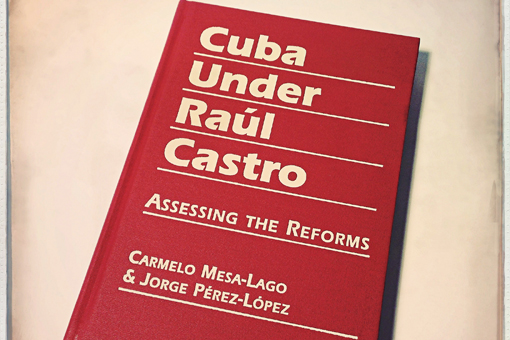When Cuban President Raúl Castro first assumed power in 2006 after his bombastic brother, Fidel, fell ill, few knew what to expect. Some believed his custodianship of the presidency would be short-lived and that the island’s longtime Líder Máximo would surely come roaring back. Others simply assumed Raúl would follow in his brother’s footsteps, shepherding Cuban Communism on its already decades-long march into economic and political oblivion.
No one predicted that the unassuming former military commander Raúl would, as president, not only consolidate political power and begin nudging Cuba in a new direction, but undertake fundamental reforms that are now transforming the island’s socialist system into a mixed-market economy. Yet even today’s most jaded skeptics and the government’s harshest critics can no longer deny the sweeping changes that have taken place on the island since 2008.
Although the international news media have provided adequate coverage of major changes—such as the rise of self-employment on the island and the legalization of home and car sales—lacking until recently has been more in-depth analysis that combines a comprehensive overview of the ongoing reforms with the historical context required to understand what they mean for Cuba’s future. Cuba Under Raúl Castro: Assessing the Reforms by Carmelo Mesa-Lago, professor emeritus at the University of Pittsburgh, and Jorge Pérez-López, executive director of the Fair Labor Association, is an ambitious attempt to fill this gap with an encyclopedic volume by two top authorities on the Cuban economy. The book hits the mark by providing a fresh conceptual framework for understanding the reforms, and a bevy of statistics to support their analysis of how these new policies are affecting Cuban society.
To help readers understand what makes Cuba’s most recent reforms unique, the authors begin by providing some historical perspective. Raúl Castro’s public announcement in 2007 of the imperative to undertake “structural and conceptual reforms” sounded like a broken record to longtime Cuba watchers. Fidel himself had previously enacted market-based reforms during past economic crises, only to later reverse course and publicly excoriate advocates of change. In fact, Cuba’s economic and social policies have swung between so-called “idealist” and “pragmatic” cycles at least eight times since 1959, giving rise, as the authors write, “to [economic] cycles of different intensity and length that have alternated [between] movement toward or away from the market.”
Idealist cycles, say the authors, are characterized by “an increase in the degree of collectivization and centralization in decision-making,” a “phasing out of foreign investment,” and the disappearance of “free agricultural markets and self-employment.” Pragmatic cycles “are diametrically opposite” and look like what we observe in Cuba today: decollectivization, decentralization of decision-making, wider use of market prices, and the expansion of self-employment.
The authors’ broader point is that the most recent policy moves are underpinned by past reformist impulses very similar to those that have emerged under Fidel (with modest success)—only to be abandoned soon after in favor of ideologically driven policies. The major differences today, they contend, are the sheer breadth of the reforms (they are the most comprehensive ever undertaken) and the likelihood that they will stick. Raúl’s public commitment to the reform process and his willingness to publicly criticize past mistakes far exceeds any of Fidel’s statements. As President Raúl Castro said in April 2011, “The only thing that could result in the failure of the Revolution and of socialism in Cuba… is our inability to overcome the errors that we have made over more than 50 years, and the new ones that we might incur in the future.” In other words, the reforms are irreversible.
By successfully providing readers with a novel framework within which to judge the current reforms—and their sustainability—the authors have made an important contribution to contemporary thinking about Cuba. But an arguably more significant achievement stems from the writers’ willingness to delve into the opaque and fuzzy world of Cuban economic statistics. Mesa-Lago and Pérez-López not only present their qualitative views on what is taking place in Cuba, they provide a quantitative picture of how economic policies affect Cuban society and the island’s economy.
Cuba Under Raúl Castro is effectively an almanac of meticulously researched economic statistics. The authors use this data to answer a series of seemingly simple questions: how have “pragmatic” cycles affected Cuba’s economic growth, unemployment and external balance of payments? Has agricultural output tended to drop during “idealist” cycles? How are today’s reforms likely to affect consumer prices and economic inequality?
But there is nothing simple about such questions in Cuba, we learn, because official statistics are often inaccurate, nonexistent or incompatible with international norms.
Analyzing economic statistics in Cuba may be more art than science. But by pulling together vast quantities of data from a diverse range of international and official Cuban sources—and discussing the data’s limitations, when necessary—the authors ensure that the picture they paint is as politically neutral and accurate as possible.
For instance, when discussing GDP growth, they openly call into question official 2006 government growth estimates of 12.1 percent by pointing to procedural changes to accounting methods that year. When discussing social welfare indicators, the authors declare candidly that “there is no reliable information… on the purchasing power of salaries” and that “there are no official statistics on the incidence of poverty, income distribution or race.” Yet they proceed to address each of these issues directly, using quantitative evidence derived from the best available sources.
The authors’ final contribution is compiling a group of recommendations they argue will “enhance” the ongoing reforms. While some are their own suggestions, others originate from other “economists and social scientists inside and outside the island.” The list stands out for both breadth and comprehensiveness, encompassing the need to improve the quality of economic statistics on the island, price reform, monetary policy, property rights, microcredit, gender and social inequality, and the need for eventual political reform.
In terms of broad strategy, they conclude, “It is essential for Cuba to move firmly, swiftly, and with greater depth to implement the key structural reforms needed to increase production of goods and services, expand exports and import substitution, and achieve the kind of sustained economic growth that will improve the economic and social well-being of its people.”
The level of detail may put off the non-specialist reader, and this book offers no groundbreaking findings. Specialists will also come away with more questions—such as how the authors would prioritize their recommendations and implement them. But such questions only reflect the important place this book will occupy from now on in serious Cuba analysis.






